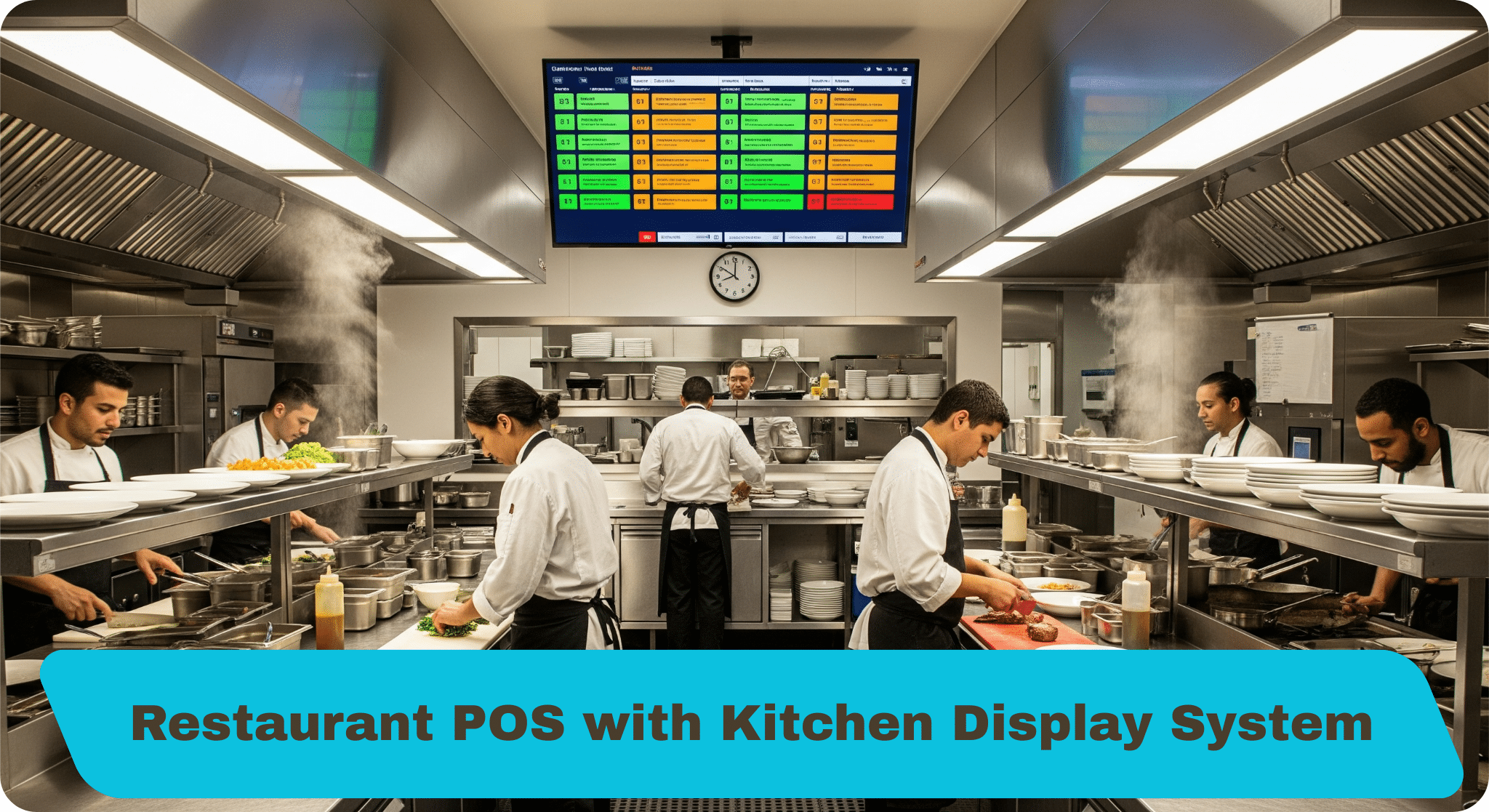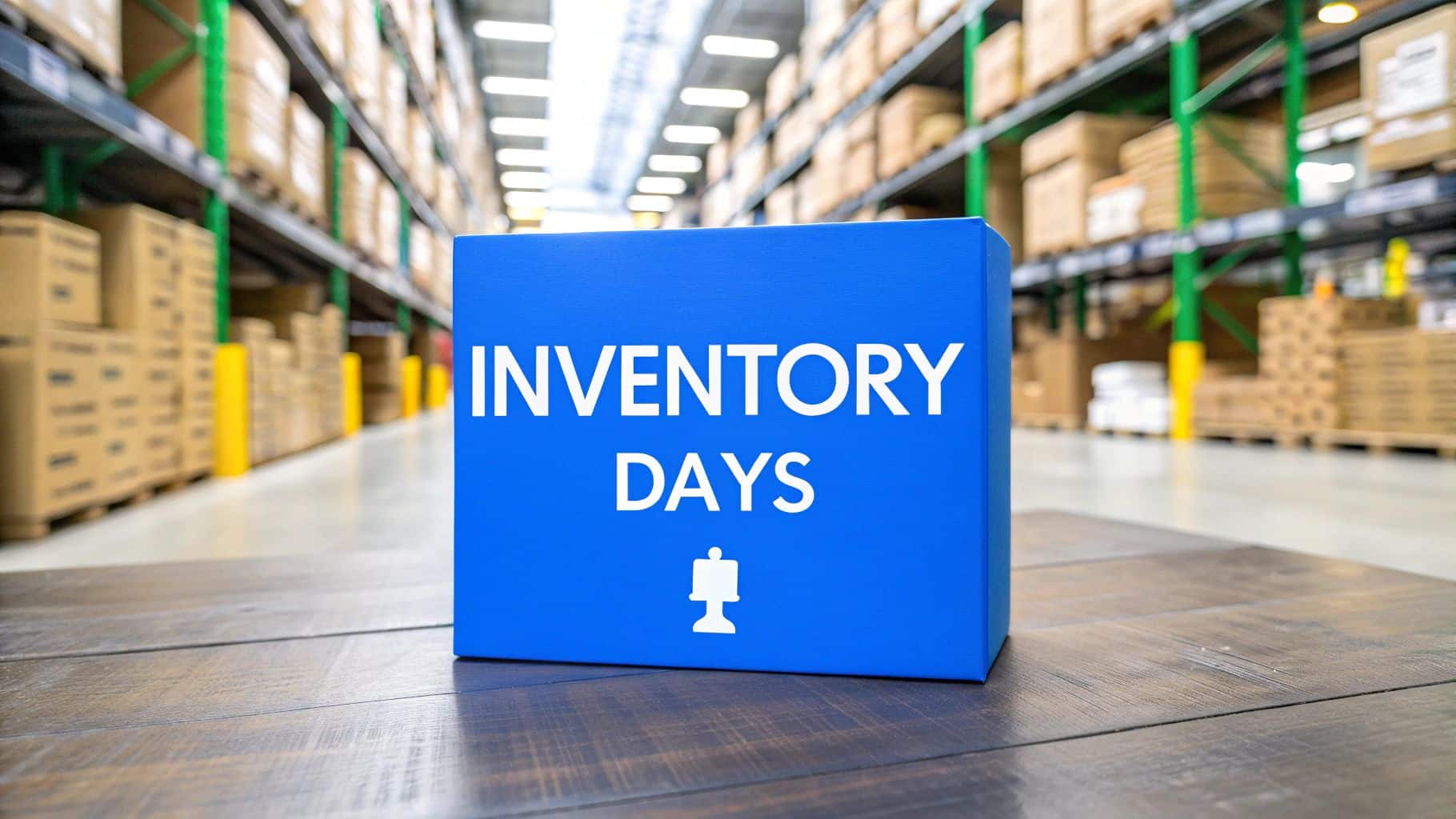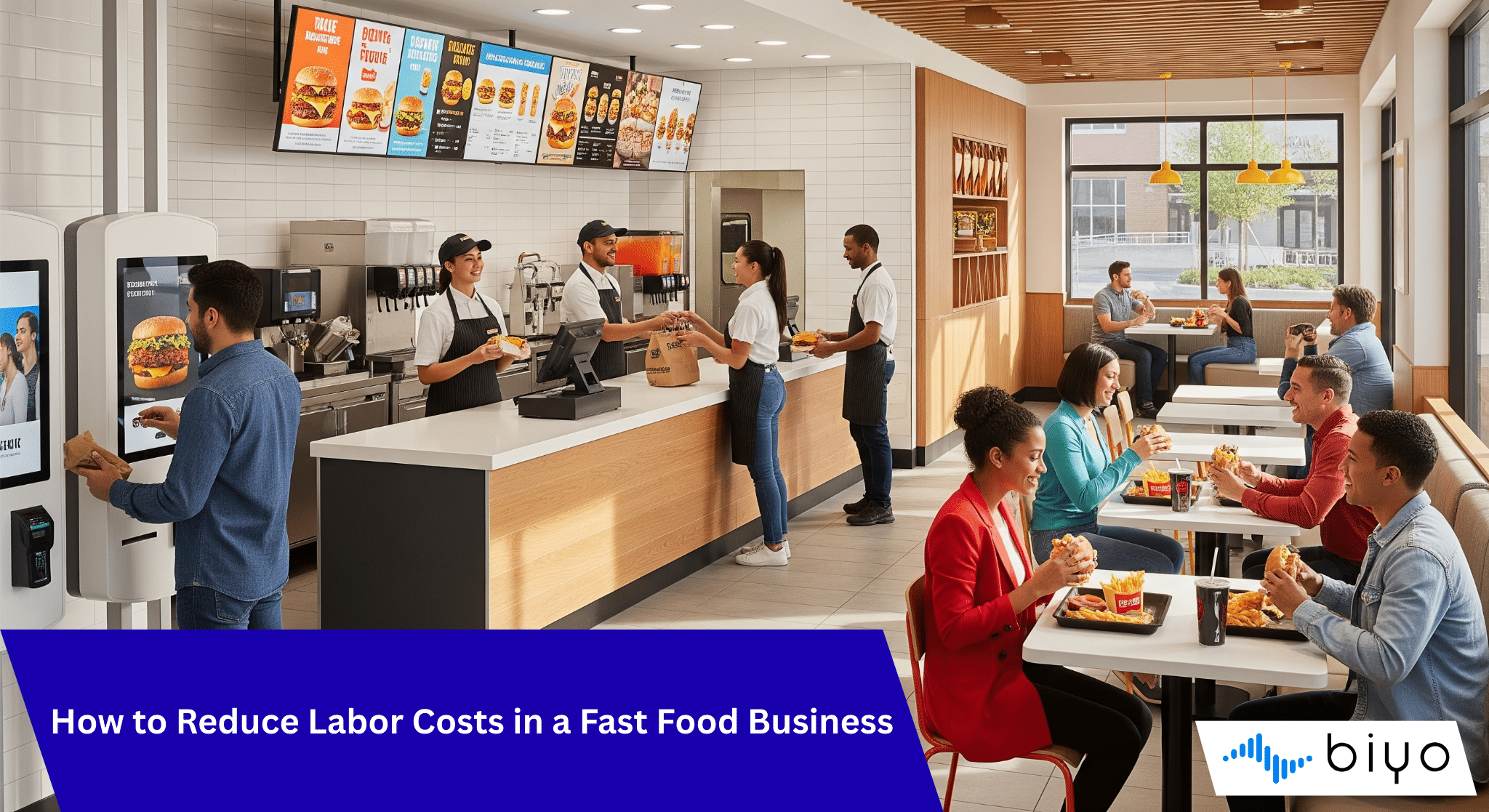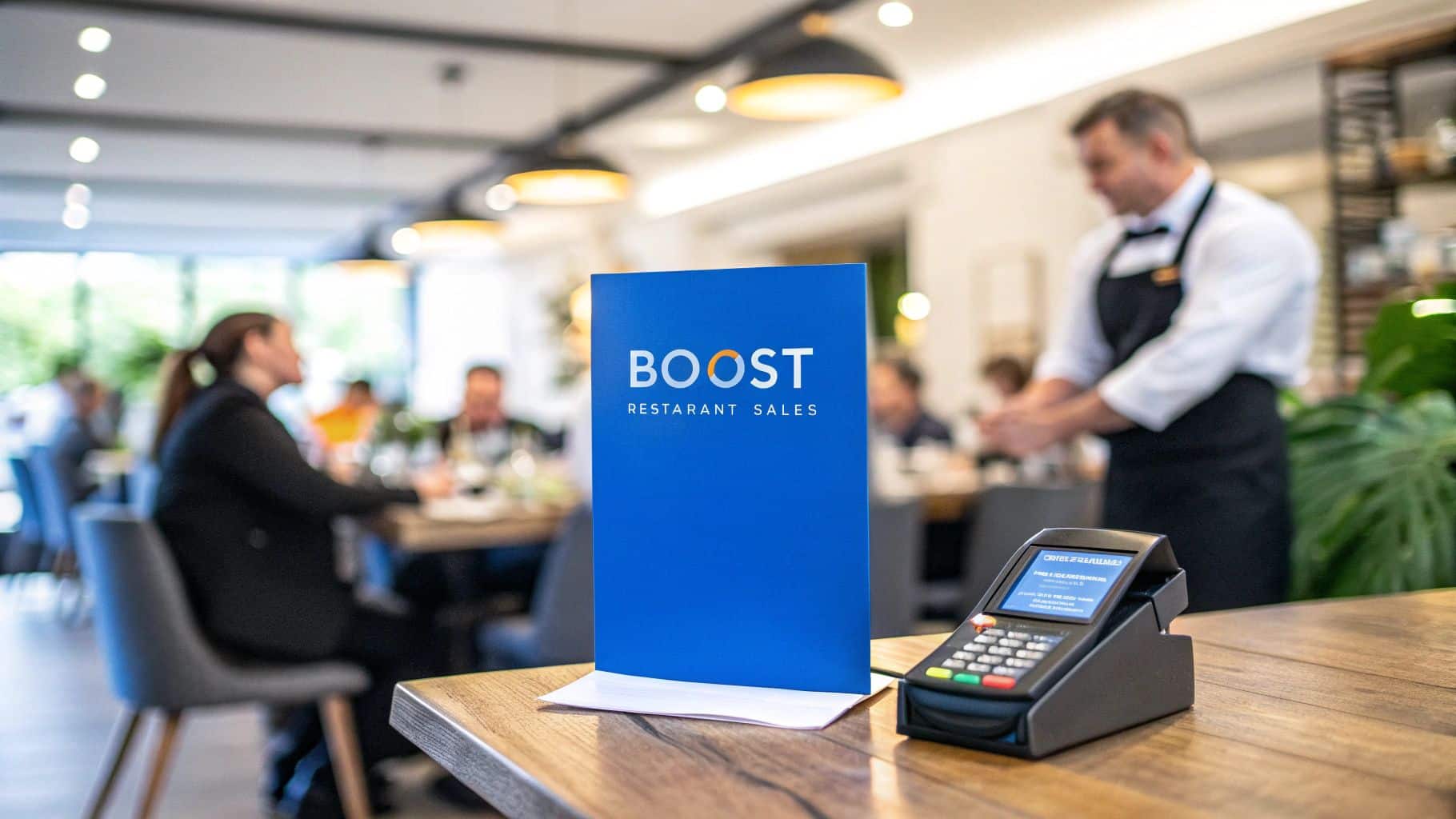Operating a coffee shop or bistro requires a balance between excellent service, efficiency, and profitability. With customers expecting quick service, personalized options, and convenient payment methods, owners can no longer rely on outdated systems. A modern POS solution for coffee shops and bistros not only handles payments but also supports order management, staff scheduling, loyalty programs, and real-time analytics. In this in-depth guide, we’ll explore the essential features, operational benefits, customer experience enhancements, and decision-making factors that make a POS system indispensable for coffee shops and bistros.
Table of Contents
- Essential Features in a POS Solution for Coffee Shops and Bistros
- Enhancing Daily Operations with a Modern POS
- Improving Customer Experience with Smart POS Features
- Using Analytics and Reporting to Drive Growth
- How to Choose the Right POS Solution for Coffee Shops and Bistros
- Why Biyo POS is the Ideal Choice
- FAQ
Essential Features in a POS Solution for Coffee Shops and Bistros
Modern cafés and bistros need more than cash registers. The right POS solution for coffee shops and bistros streamlines every step of the customer journey—from placing an order to final payment. Let’s break down the features that set advanced systems apart.
Order Management and Quick Service POS
Order management is one of the most critical aspects of running a café. During busy morning rushes, baristas may take dozens of orders in just a few minutes. A quick service POS allows staff to input complex coffee orders quickly, such as “double shot cappuccino with oat milk and sugar-free syrup,” without missing details. This ensures accuracy and speed while eliminating the mistakes often associated with handwritten notes or verbal relays. When orders instantly appear on a kitchen display system, every team member stays in sync.
The benefits extend beyond accuracy. With quick service POS systems, modifications and add-ons are seamlessly tracked. If a customer wants to upgrade their drink to a larger size or add a pastry, the system automatically adjusts pricing, preventing errors that eat into profits. This streamlined process reduces customer frustration and ensures faster order delivery, which is essential when people are on tight schedules.
Real-world examples highlight the impact. A small café in New York implemented a quick service POS and reduced average order time by 30 seconds. While that may sound small, over hundreds of orders each morning, it translated into shorter lines, happier customers, and increased revenue. Order management systems aren’t just about convenience—they directly affect a café’s bottom line.
Menu Customization and Receipt Printing
Every café and bistro thrives on creativity and flexibility. Seasonal drinks, special offers, and dietary alternatives keep customers coming back. A POS solution for coffee shops and bistros must support customizable menus so that managers can add or remove items with just a few clicks. For example, introducing a limited-time pumpkin spice latte in the fall or a refreshing iced matcha in summer should be simple to implement and promote. These changes keep the menu dynamic and help cafés stand out in a competitive market.
Customizable menus also make it easier to upsell and cross-sell. When a customer selects a cappuccino, the POS can prompt staff to suggest an extra shot, a premium syrup, or a food pairing like a croissant. These prompts drive incremental sales while maintaining a natural flow in the ordering process. The system essentially becomes a digital sales assistant for the café team.
Receipt printing, though often overlooked, plays a powerful role in customer engagement. Receipts can include loyalty rewards progress, promotional codes, or personalized thank-you notes. A café might print a message like, “You’re only two drinks away from a free pastry!” This small addition encourages repeat visits. Digital receipts further enhance convenience, catering to customers who prefer eco-friendly, paperless options while building a customer database for marketing efforts.
Contactless Payments and Multi-Device Sync
In today’s fast-paced world, customers expect fast, secure, and hygienic payment options. A POS that supports contactless payments—such as Apple Pay, Google Wallet, and NFC cards—reduces wait times while enhancing safety. This feature became especially important during and after the pandemic, as more people sought touch-free interactions. For cafés and bistros, offering these options is no longer an extra—it’s a necessity to remain competitive and meet customer expectations.
Multi-device synchronization ensures that every team member has access to the same information in real time. For instance, if the kitchen marks an item as sold out, the POS immediately updates across the counter, mobile devices, and even online ordering platforms. This prevents the awkward experience of telling a customer their choice is unavailable after they’ve already placed an order. Instead, the system empowers staff to provide accurate and timely updates.
Consider a scenario where a bistro operates both a counter and a small patio service. With multi-device sync, servers can take orders directly from a tablet at the table, and those orders instantly appear in the kitchen. Meanwhile, the inventory adjusts automatically, keeping records accurate. This creates a seamless customer experience and eliminates duplication or missed orders.

Enhancing Daily Operations with a Modern POS
Beyond taking orders and processing payments, a POS solution for coffee shops and bistros ensures smooth operations behind the scenes. From managing employees to optimizing kitchen efficiency, a POS system serves as the operational backbone of the business.
Inventory Tracking and Real-Time Analytics
Inventory is the lifeblood of a café. Running out of espresso beans at 8 AM or croissants during lunchtime can result in disappointed customers and lost sales. A modern POS system automatically tracks every ingredient and product sold, updating stock levels in real time. This eliminates the need for manual counts and reduces human error. Owners can set alerts for low-stock items, ensuring replenishment happens before a crisis occurs.
Real-time analytics connected to inventory provide actionable insights. If a café notices that almond milk sells faster than soy milk, management can adjust supply orders to match customer demand. Similarly, if pastries sell out daily by noon, increasing the stock of baked goods becomes a priority. These insights not only prevent shortages but also help owners avoid overstocking items that may spoil and waste money.
Industry studies suggest that cafés using POS-based inventory systems save an average of 3–5% annually on food costs. By aligning purchasing with actual demand, owners improve margins while ensuring customers always find their favorite items available.
Staff Scheduling and Tip Management
Employee management is often one of the most challenging aspects of running a café or bistro. High turnover, fluctuating shifts, and part-time schedules make it difficult to maintain consistency. A modern POS system integrates staff scheduling directly into the platform, allowing managers to build schedules, track attendance, and communicate changes instantly. Employees can check schedules via mobile apps, reducing misunderstandings and last-minute callouts.
Tip management is another essential feature. Instead of manually calculating tips, the POS distributes them automatically based on hours worked, roles, or pooled arrangements. This transparency fosters fairness and trust among staff. For example, if baristas work longer shifts than floor staff, the system allocates tips proportionally, preventing disputes and saving managers hours of administrative work each week.
With proper scheduling and tip management tools, staff morale improves, turnover decreases, and customers enjoy a consistent service experience. When employees feel valued and fairly compensated, they deliver higher-quality service, directly benefiting the business.
Kitchen Display System and Table Management
For bistros that serve both quick bites and sit-down meals, efficiency in the kitchen is essential. A kitchen display system (KDS) replaces messy paper tickets with digital screens that clearly show orders in the sequence they need to be prepared. Chefs and cooks can prioritize based on preparation time, ensuring hot meals and drinks are served fresh. This reduces miscommunication and errors, especially during peak service hours.
Table management integrates seamlessly with the POS, allowing servers to view table status in real time. Staff can see which tables are occupied, which are reserved, and which need cleaning. This allows for smoother turnover and reduces waiting times for incoming guests. By balancing kitchen operations with seating logistics, cafés and bistros maximize revenue per service window while keeping guests satisfied.
For example, a bistro in Chicago integrated KDS and table management into their POS and saw a 20% improvement in table turnover rates. This meant more guests served per evening and higher overall revenue, without increasing staff workload. It’s proof that technology directly translates to improved profitability.
Improving Customer Experience with Smart POS Features
A great café or bistro isn’t just about good food and drinks—it’s about memorable experiences. A POS solution for coffee shops and bistros helps owners personalize interactions, build loyalty, and make customers feel valued.
Loyalty Programs and Customer Database
Loyalty programs have long been a staple of coffee shops. From the traditional punch card to today’s digital rewards, customers love feeling appreciated. A POS system with built-in loyalty features allows cafés to track visits, offer discounts, and reward repeat customers automatically. For example, after ten coffee purchases, a customer might receive a free pastry. These incentives encourage repeat business while fostering a sense of belonging.
Beyond rewards, a POS with a customer database collects valuable insights. Purchase history, favorite drinks, and visit frequency can all be tracked. This information enables personalized offers, such as emailing a regular chai latte drinker about a new spiced tea promotion. Personalized marketing makes customers feel recognized and deepens their loyalty to the brand.
In practice, cafés that implement loyalty programs often see a 20–30% increase in repeat visits. Customers enjoy the value, and businesses enjoy the reliable foot traffic. Loyalty and personalization transform occasional visitors into dedicated fans.
Online Ordering Integration and Mobile POS
In today’s digital-first environment, convenience drives customer decisions. A POS system that integrates online ordering allows customers to place their orders through apps or websites, then pick up or have items delivered. This flexibility not only meets customer expectations but also expands a café’s reach beyond physical walls. During the pandemic, online ordering became a survival tool, and it remains a growth driver in the industry.
Mobile POS devices extend this convenience inside the café. Staff can take orders directly at tables or even outside for sidewalk service. Instead of customers queuing at the counter, servers can process payments and send orders directly to the kitchen from a handheld device. This mobility reduces congestion and enhances customer service, especially during busy hours.
Together, online ordering integration and mobile POS create a seamless omnichannel experience. Customers can interact with the brand however they prefer—whether it’s through an app, website, or face-to-face. This flexibility is a major competitive advantage in a saturated market.
Customizable Menus and Affordable POS Options
Menu customization allows cafés to adapt to trends and customer preferences quickly. A POS solution for coffee shops and bistros with flexible menu settings makes it easy to add vegan options, limited-edition beverages, or region-specific items. This adaptability keeps menus exciting while showcasing the café’s creativity. Customers notice these touches, and it differentiates independent cafés from chain competitors.
Affordability is equally important, particularly for smaller businesses. Many cafés hesitate to adopt modern POS systems because of perceived high costs. However, today’s cloud-based POS platforms offer affordable subscription models that scale with business size. Owners can start with essential features and add more advanced ones as they grow, avoiding overwhelming upfront investments.
By combining customizable menus with affordable solutions, cafés create a winning formula. They stay innovative while keeping expenses under control, making growth sustainable in the long term.
Using Analytics and Reporting to Drive Growth
In business, knowledge is power. A POS solution for coffee shops and bistros collects data with every transaction, turning sales into actionable insights. With detailed reporting and analytics, café owners can optimize strategies, reduce waste, and grow revenue with confidence.
Sales Reporting and Real-Time Insights
Sales reports provide clarity on what works and what doesn’t. By analyzing daily, weekly, or monthly reports, owners identify best-selling items and underperforming products. For example, if cappuccinos outsell lattes by 2:1, promotional efforts can focus on enhancing latte sales or introducing new variations. Sales reporting also helps cafés spot peak times, ensuring staff levels match demand and avoiding bottlenecks.
Real-time insights go a step further. Instead of waiting until the end of the day, managers can monitor sales trends as they happen. If a special promotion generates high demand, they can extend it for the rest of the day. If an item isn’t selling, they can pivot quickly to offer discounts or bundle deals. This responsiveness improves both customer satisfaction and revenue.
Ultimately, sales reporting removes guesswork from business management. It replaces gut feelings with hard data, ensuring every decision is grounded in evidence.
Customer Behavior and Loyalty Tracking
POS systems capture more than sales—they capture behavior. By tracking loyalty program engagement, purchase frequency, and item preferences, cafés can tailor their offerings to fit customer needs. For instance, a café might notice that customers who buy specialty teas also tend to purchase baked goods. This insight can drive bundle offers, increasing average transaction value.
Behavioral tracking also highlights high-value customers. These regular patrons can be rewarded with exclusive offers, early access to new menu items, or VIP experiences. Recognizing loyal customers not only strengthens relationships but also creates brand advocates who recommend the café to others.
In an industry where repeat business is vital, loyalty tracking provides a roadmap to deeper customer engagement. It ensures cafés stay connected to their most important audience—their regulars.
Financial Forecasting and Growth Planning
Data from a POS solution for coffee shops and bistros supports long-term planning. By analyzing historical sales patterns, owners can forecast revenue, anticipate seasonal fluctuations, and plan for new investments. For example, if summer iced drink sales consistently outperform winter hot drinks, cafés can allocate resources accordingly. These insights reduce risk and improve profitability.
Cloud-based POS systems make this data accessible from anywhere. Owners traveling between locations or working off-site can log in to view performance dashboards. This accessibility ensures they remain informed and in control, regardless of physical presence.
Financial forecasting backed by reliable data transforms small cafés into strategic businesses. Instead of reacting to challenges, they proactively plan for growth, expansion, and new revenue opportunities.
How to Choose the Right POS Solution for Coffee Shops and Bistros
With so many systems on the market, choosing the right POS solution for coffee shops and bistros can feel overwhelming. The decision depends on balancing functionality, scalability, and support. Here’s how to make the best choice.
Ease of Use and Training
High staff turnover in the foodservice industry makes ease of use a top priority. A POS with an intuitive design shortens training time and minimizes mistakes during service. New hires can quickly learn the system, reducing downtime and ensuring customers continue to receive quality service. This also lessens the stress on managers who otherwise spend significant time training new staff.
User-friendly systems also benefit long-term employees. Instead of navigating confusing menus, staff can focus on building customer relationships. In a café environment where personal interactions are part of the charm, this advantage is significant. Ease of use creates a positive work environment that directly impacts customer experience.
Ultimately, a POS should empower staff, not frustrate them. The smoother the system, the smoother the service.
Integration and Compatibility
A POS system should fit seamlessly into the broader business ecosystem. Integration with accounting software, online ordering apps, and customer relationship tools ensures all data flows together. This saves time and prevents errors caused by manual entry. For example, sales automatically syncing with bookkeeping software reduces administrative work while improving financial accuracy.
Compatibility with hardware like receipt printers, barcode scanners, and mobile devices is equally important. If a café already owns equipment, the POS should integrate rather than require costly replacements. Scalable hardware compatibility ensures the system adapts to the business, not the other way around.
Strong integration and compatibility ensure the POS supports long-term growth, not just immediate needs. This foundation allows cafés to build smarter, more efficient operations.
Scalability and Support
The right POS grows with the business. Whether expanding to multiple locations or adding delivery services, scalability is critical. Cloud-based solutions simplify scaling by allowing new locations or features to be added without major infrastructure changes. This flexibility is invaluable for cafés with long-term growth ambitions.
Equally important is customer support. A reliable POS provider offers training resources, regular updates, and 24/7 assistance. This support ensures businesses run smoothly, even during unexpected technical issues. For small cafés, a single hour of downtime can result in significant revenue loss, making dependable support essential.
Scalability paired with strong support guarantees that the POS remains a valuable investment for years. It provides the confidence owners need to expand and innovate without fear of technological setbacks.

Why Biyo POS is the Ideal Choice
Among the many options available, Biyo POS stands out as a dedicated POS solution for coffee shops and bistros. Its intuitive design, robust features, and affordability make it an excellent fit for small businesses seeking to compete with larger chains. With integrated order management, mobile POS, loyalty programs, and real-time analytics, Biyo POS empowers cafés to deliver top-tier service while optimizing operations.
Biyo POS also offers online ordering integration, customizable menus, and support for contactless payments. Its cloud-based system ensures data accessibility, while scalability makes it suitable for growing businesses. Combined with strong customer support, Biyo POS is more than just software—it’s a growth partner for cafés and bistros.
For owners seeking a balance between functionality, affordability, and innovation, Biyo POS is the smart choice to build sustainable success in a competitive market.
FAQ
What is the best POS solution for coffee shops and bistros?
The best systems combine quick service order management, loyalty programs, contactless payments, and real-time analytics. Cloud-based options like Biyo POS are flexible, scalable, and affordable for cafés and bistros of all sizes.
How does a POS system help manage inventory in a café?
A POS tracks stock levels automatically, updating them with each sale. This prevents shortages, reduces waste, and ensures owners order supplies based on real demand rather than guesswork.
Can POS systems improve customer loyalty?
Yes. POS systems include loyalty programs and customer databases that personalize offers and reward repeat visits. These features encourage customers to return, building long-term loyalty.
Do small cafés really need a POS system?
Absolutely. Even the smallest coffee shop benefits from a POS system. It simplifies transactions, improves efficiency, reduces errors, and provides valuable insights to drive growth. Affordable options make it accessible to small businesses.
What makes Biyo POS a good choice?
Biyo POS is designed for foodservice businesses. It offers customizable menus, online ordering integration, loyalty programs, and contactless payments, all at an affordable price. Its scalability and strong support make it ideal for cafés and bistros looking to grow.




